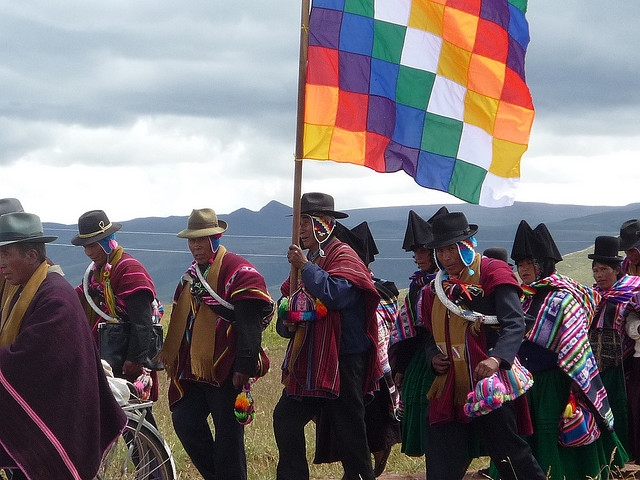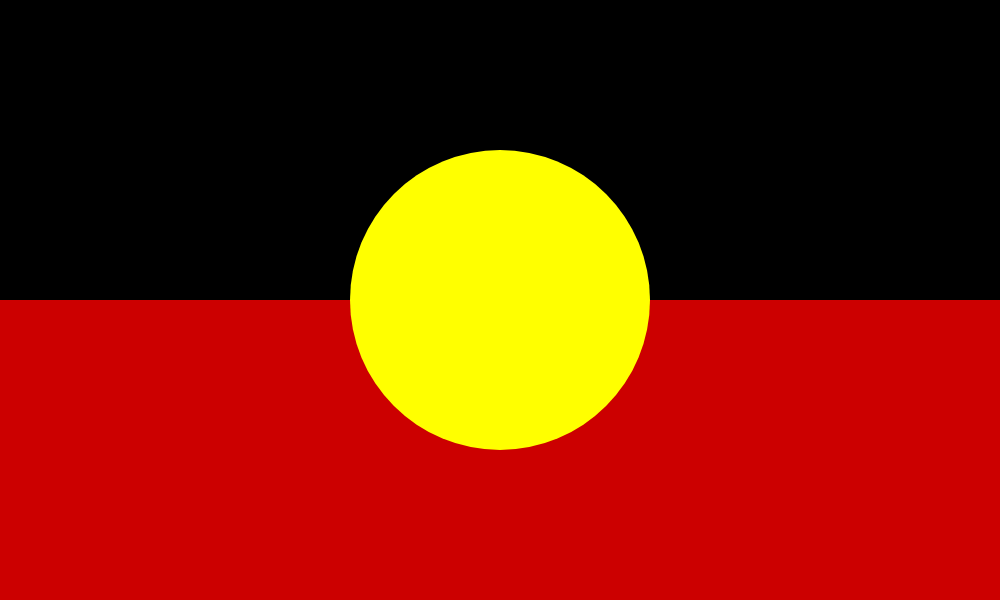The Aymara or Aimara people are an indigenous people in the Andes and Altiplano regions of South America; about 2.3 million live in northwest Argentina, Bolivia, Chile, and Peru
History
The region where Tiwanaku and the modern Aymaras are located, the Altiplano, was conquered by the Incas under Huayna Capac (reign 1493–1523), although the exact date of this takeover is unknown. It is most likely that the Inca had a strong influence over the Aymara region for some time. Though conquered by the Inca, the Aymaras retained some degree of autonomy under the empire.
The Spanish arrived in the western portions of South America in 1535. Soon after, by 1538, they subdued the Aymara. Initially, the Aymara exercised their own distinct culture now free of Incan influence (earlier conquered by the Spanish) but acculturation and assimilation by the Spanish were rapid. Many Aymara at this turbulent time became laborers in mines and agricultural fields.
In response to colonial exploitation by the Spanish and elite in the fields of agriculture, mining, coca harvesting, domestic work, and more the Aymara (along with others) staged a rebellion in 1629. This was followed by a more significant uprising mostly by Aymaras in 1780 in which the Aymara almost captured the city of La Paz and many Spaniards were killed. This rebellion would be put down by the Spanish two years later. However, uprisings would continue to occur against Spanish rule intermittently until Peruvian independence in 1821.
The War of the Pacific started in 1879 and led Chile to occupy Peruvian territory with Aymara populations already by 1880. Tarapacá Department was formally annexed in 1883 and Arica in 1929. When compared with the Mapuche people of Araucanía who were also incorporated into Chile in the late 19th century the Aymara obtained relatively unfavorable views as "foreign elements" by Chilean elites contrasting with Mapuches who were seen as "primordial" Chileans.
The major reforms caused by the Bolivian Revolution of 1952 resulted in the Aymara being more integrated into mainstream Bolivian society. This also caused many Aymara to become severed or not affiliated with their native communities any longer. Most Bolivian Aymara today engage in farming, construction, mining, and working in factories though a growing number are now in professional work. The Aymara language (along with Quechua) is now an official language in Bolivia and there has been a rise of programs to assist the Aymara and their native lands
Geography
Most present-day Aymara speakers live in the Lake Titicaca basin, a territory from Lake Titicaca through the Desaguadero River and into Lake Poopó (Oruro, Bolivia) also known as the Altiplano. They are concentrated south of the lake. The capital of the ancient Aymara civilization is unknown. The present urban center of the Aymara region may be El Alto, a 750,000-person city near the Bolivian capital, La Paz.
Culture
The Aymara flag is known as the Wiphala  ; it consists of seven colors patched together with diagonal stripes.
; it consists of seven colors patched together with diagonal stripes.
The native language of the Aymaras is Aymara. Many of the Aymaras speak Spanish as a second or first language when it is the predominant language in the areas where they live.
Most of the contemporary Aymaran urban culture was developed in the working-class Aymara neighborhoods of La Paz such as Chijini, and neighboring El Alto. Both Quechua and Aymara women in Peru and Bolivia took up the style of wearing bowler hats in the 1920s.
The luxurious, elegant, and cosmopolitan Aymara Chola dress, which is an icon of Bolivia (bowler hat, aguayo, heavy pollera, skirts, boots, jewelry, etc.) began and evolved in La Paz. It is an urban tradition of dress. This style of dress has become part of ethnic identification by Aymara women. Another recent innovation drawing on the Cholas' colorful aesthetics is buildings designed in a "Neo-Andean" style concentrated in El Alto
The Aymaras have grown and chewed coca plants for centuries, using their leaves in traditional medicine as well as in ritual offerings to the father god Inti (Sun) and the mother goddess Pachamama (Earth). During the last century, there has been conflict with state authorities over this plant during drug wars; the officials have carried out coca eradication to prevent the extraction and isolation of the drug cocaine. However, the ritual use of coca has a central role in the indigenous religions of both the Aymaras and the Quechuas. Coca is used in the ritual curing ceremonies of the yatiri. Since the late 20th century, its ritual use has become a symbol of cultural identity.
Chairo is a traditional stew of the Aymaras. It is made of chuño (potato starch), onions, carrots, potatoes, white corn, beef, and wheat kernels. It also contains herbs such as coriander and spices. It is native to the region of La Paz.
Politics
The Aymaras and other indigenous groups have formed numerous movements for greater independence or political power. These include the Tupac Katari Guerrilla Army, led by Felipe Quispe, and the Movement Towards Socialism, a political party organized by the Cocalero Movement and Evo Morales. These and other Aymara organizations have led political activism in Bolivia, including the 2003 Bolivian Gas War and the 2005 Bolivia protests.
Evo Morales is an Aymara coca grower from the Chaparé region. His Movement Toward Socialism party has forged alliances with both rural indigenous groups and urban working classes to form a broad leftist coalition in Bolivia. Morales has run for president in several elections since the late 20th century, gaining increasing support. In 2005 he won a surprise victory, winning the largest majority vote since Bolivia returned to democracy. He is the first indigenous president of Bolivia. He is credited with the ousting of Bolivia's previous two presidents.
Megathreads and spaces to hang out:
- ❤️ Come listen to music and Watch movies with your fellow Hexbears nerd, in Cy.tube
- 💖 Come talk in the New Weekly Queer thread
- 💛 Read and talk about a current topics in the News Megathread
- 💚 Come and talk in the Daily Bloomer Thread
- ⭐️ September Movie Nominations ⭐️
reminders:
- 💚 You nerds can join specific comms to see posts about all sorts of topics
- 💙 Hexbear’s algorithm prioritizes comments over upbears
- 💜 Sorting by new you nerd
- 🌈 If you ever want to make your own megathread, you can reserve a spot here nerd
- 🐶 Join the unofficial Hexbear-adjacent Mastodon instance toots.matapacos.dog
Links To Resources (Aid and Theory):
Aid:
Theory:



Maybe it's a me thing but I think it's kind of cringe to announce your labels in your social media bio. Like pronouns make sense because that's how you're referred to but I'd hope things like my politics would be self evident from my posts. I mean why say I'm a Marxist-Leninist, I have no connection to that label that's just what other people that think mostly as I do label themselves, its shorthand for actually explaining my beliefs. If I actually tried to succinctly define my politics the best I could come up with is a picture of me pointing and laughing as the twin towers fall.
the last sentence LMAOO
yeah i get that though, i feel like i can agree and disagree with a lot of different marxist schools of thought so it’s hard to pin down an exact label and trying to actively seek out the “perfect” label or perfectly adhere to one is exhausting. personally i’m probably somewhere between an ML and an MLM idk
None of this is directed at you, it's just got me on rant bc i think about this a lot.
-rant enabled- I'm a "holy shit those dudes have all been dead for centuries i do not care about the great leap forward or revolutionary spain can we focus on things that happened after the berlin wall and the invention of fire please?"ist.
Like it's weird that we (me guilty too) hang our hats on guys who died way back in the 20th century with everything that has radically changed back then. Like why are anarchists still mad about Stalin when most of them aren't even revolutionary anarchists and would have denounced both revolutionary spain and mahkno as authoritarians? Why does everyone still get mad about trotsky? Why doesn no one consider themselves like a hooks-fanon-titoist or anything ?
Idk, i'm ranting it's just something i worry about a lot. Left unity, i think, requires that we finally bury our dead and let them rest so we can move beyond their triumphs and failures.
no i think you’re 100% right, i think there is value in talking about those things in far as learning from what they did wrong and right but that’s about it people get way to hung up on stuff like “i can’t believe stalin did x”
Some people do it for personal branding or to differentiate accounts. Generally I don’t blame people for wanting to feel a sense of belonging, but I also agree that on a personal level I wouldn’t label myself as one thing or another.
If every conversation i have is going to end with me screaming idealist and them screaming
idealist and them screaming  tankie it will save time for everyone if i just put "Stalin was right about some things" in my bio so we can skip the foreplay and go straight to the knife fight.
tankie it will save time for everyone if i just put "Stalin was right about some things" in my bio so we can skip the foreplay and go straight to the knife fight.